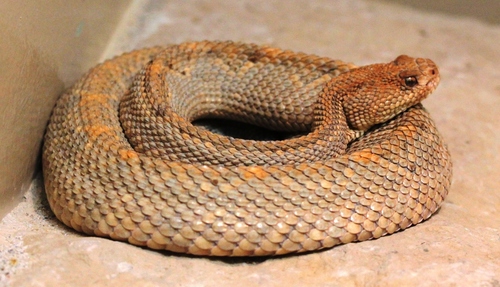
Aruba Island rattlesnake
The Aruba rattlesnake, Crotalus unicolor, boasts a sandy hue for perfect camouflage among Aruba's rocky terrain. Endemic to this small island, it plays a vital role in the ecosystem by managing rodent populations. Its elusive behavior and distinctive rattling warn of its venomous bite, ensuring survival in a limited habitat.
Length: 61 - 91 cm
Size
Brown, Grey, Fawn
Color
Low
Aggression
Characteristics
Crotalus unicolor, known as the Aruba rattlesnake, is a venomous pit viper endemic to the Caribbean island of Aruba. It features a sandy coloration that aids in camouflage, with a distinctive rattle at the tail. Preferring dry, rocky habitats, this snake is known for its reclusive nature and crucial role in controlling rodent populations.
Distribution Range of the Aruba Island rattlesnake
Crotalus unicolor, commonly known as the Aruba Island rattlesnake, is native to the island of Aruba in the Caribbean. This species is endemic to this region, meaning it is exclusively found there.
Aruba Island rattlesnake's Habitat
Environmental Conditions
The Aruba Island rattlesnake inhabits dry, rocky environments typical of the island. The climate in Aruba is arid, characterized by low rainfall and high temperatures. Vegetation in these areas is sparse, consisting primarily of cacti, thorn scrub, and small shrubs.
Ecological Niche
Crotalus unicolor occupies a niche as a terrestrial predator in its arid environment. It primarily preys on small mammals, birds, and lizards, using its venomous bite to subdue prey. The rattlesnake is adapted to the dry conditions of Aruba, often seeking shelter under rocks or in crevices to avoid the harsh midday sun.
Copyright @ Nature Style Limited. All Rights Reserved.
 English
English